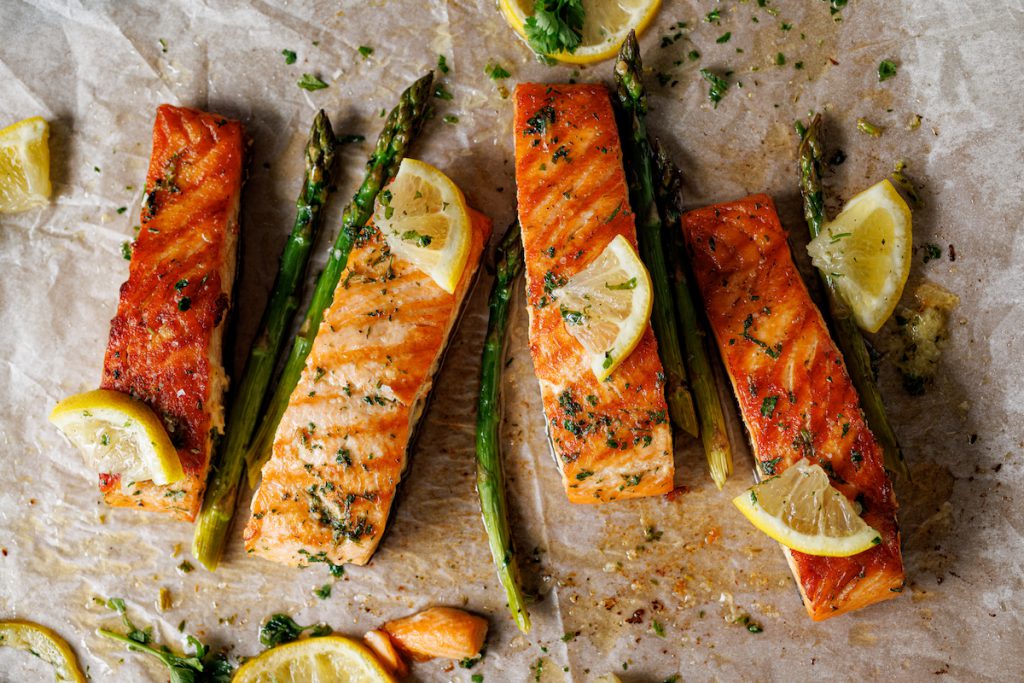Vitamina D: ¿Está ingiriendo suficiente cantidad de este nutriente clave?
Muchos adultos mayores no reciben suficiente vitamina solar. Here's why that's a problem and how to get what you need.

When it comes to nutrition, vitamin deficiencies are much less a concern than they were a century ago. But even today, many older adults are coming up short in a few key nutrients. Vitamin D is one of them.
The vast majority of Americans aren't eating enough Vitamin D every day. And some studies have found that up to a quarter of Americans have low blood levels of vitamin D.
Here's why vitamin D is such a health hero, why your levels may need a boost, and how to ensure you're hitting your target. (Hint: it might be time to serve more fish for dinner.)
Healthy eating and fitness go together! SilverSneakers classes and events are happening daily at participating gyms, online through SilverSneakers LIVE, and at community centers near you. Activate your free online account to get started.
Why Vitamin D Is so Important
Vitamin D is best known for supporting bone health. It works hand-in-hand with calcium to keep bones strong and prevent bones loss that can lead to osteoporosis. For this reason, many calcium-rich dairy foods like milk and yogurt have vitamin D added to them.
But that's not all vitamin D does. It's also been linked to a lower risk of:
It may also support a healthy immune system, making it easier for you to fight off viral infections.
Every tissue and cell in our bodies seems to need vitamin D, which is why it has such a wide range of health benefits.
Why You May Not Be Getting Enough Vitamin D
Not many foods naturally contain vitamin D. So it’s hard to get enough from diet alone. Plus, as you age, you may not absorb as much of the nutrients from your food as you did when you were younger.
But you get vitamin D from another surprising source: the sun. Your body makes vitamin D from cholesterol in your skin when it’s exposed to ultraviolet (UV) rays from the sun. That’s where vitamin D gets its nickname, “the sunshine vitamin.”
That said, UV exposure also ups your risk of skin cancer. But it doesn't take much to get a dose of vitamin D - just 10 to 20 minutes in the sun a couple times a week might be enough.
Oder adults tend to spend less time in the sun. And, your skin becomes less able to make vitamin D as you age. So between getting less vitamin D from food, and making less of it in your skin, you may have a higher risk of deficiency.
Research also shows that being overweight or obese can affect your vitamin D status. Many older adults have a higher percent of body fat. And that can put you at higher risk for low vitamin D status.
How to Tell if You Are Coming Up Short
There are no tell-tale symptoms of vitamin D deficiency that will tip you off that you are not getting enough. With long-term shortfalls, bone pain and muscle weakness can set in. Eventually, you may experience bone fractures from softening bones.
If you're worried about your vitamin D status, ask your doctor if you should get tested. They can order a blood vitamin D test for you to see where you stand.
It can be a good idea to get tested both during the summer and winter months. Blood levels of vitamin D tend to be lower in the winter when there is less sunlight.
How to Get Enough Vitamin D
The National Institutes of Health recommends that adults get 600 IU of vitamin D each day. If you're 70 or older, they recommend 800 IU to make up for deficiencies that come with age.
Stock up on these foods to add more vitamin D to your diet:
- Fatty fish, such as salmon, sardines and mackerel. A 3-oz portion of salmon has about 570 IU of vitamin D.
- Milk, yogurt, and other dairy foods with added vitamin D. Most of milk in the U.S. is fortified with 120 IU of vitamin D per cup. (If you prefer plant-based milks, look for ones that are fortified with calcium and vitamin D.)
- Whole eggs. One egg has about 45 IU of vitamin D. But, it’s all in the yolk, so don’t eat egg whites only.
- Fortified cereals. Many breakfast cereals have enough vitamin D added to give you 10% of your daily need per serving.
- Mushrooms. Mushrooms naturally contain a small amount of vitamin D. But some are exposed to UV light to increase their vitamin D. Check the label to find UV-treated mushrooms.
- Canned tuna. A 3-oz serving has about 40 IU of vitamin D.
Spending some time outside can help, too. But remember, it doesn’t take much. Just 10 to 20 minutes outside on a sunny day a couple days a week may be enough to give you a vitamin D boost. Always be careful to avoid sunburn.
Suscríbase a nuestro boletín informativo
Es rápido y fácil: Usted podría estar entre las 13 millones de personas elegibles.
¿Ya es miembro? Haga clic para descubrir nuestros más de 15,000 centros participantes.
Síganos
Should I Take a Vitamin D Supplement?
Because vitamin D is so hard to get, you might consider taking a supplement. But talk to your doctor first. They can help you decide if you need one, and how much to take.
Supplement doses usually range from 400 IU to 2,000 IU. But you can find larger doses, too - even up to 50,000 IU.
It is possible to get too much vitamin D, so talk to your doctor about how much is right for you. If you take a multivitamin, check to see if it has vitamin D before adding a separate vitamin D supplement.
The research on vitamin D supplements is mixed. Several studies have found that they do not result in better health outcomes in a general population. For example, a 2022 study in the New England Journal of Medicine found that vitamin D supplements did not reduce bone fractures in older adults who didn’t have a vitamin D deficiency.
That said, older adults are more likely to have low vitamin D levels. Ask your doctor if a supplement is right for you, or if you should get your vitamin D status checked.
See our sources:
Vitamin D intake: USDA Agricultural Research Service “What We Eat in America”
Low levels of vitamin D in Americans: Nature
Vitamin D and brain health: The Journal of Alzheimer’s and Dementia
Vitamin D and heart health: European Heart Journal
Vitamin D and muscle health: Calcified Tissue International
Vitamin D and diabetes: Clinical Reviews in Food Science and Nutrition
Vitamin D status and body weight: Journal of the American Medical Association
Vitamin D recommendations and food sources: NIH Office of Dietary Supplements
Vitamin D supplement and bone fractures: New England Journal of Medicine
Check Your SilverSneakers Eligibility Instantly
Los miembros de SilverSneakers pueden ir a miles de gimnasios y centros de fitness de todo el país, además de tomar clases en línea SilverSneakers EN VIVO diseñadas para adultos mayores de todos los niveles. If you have a Medicare plan, it may include SilverSneakers—at no additional cost. Check your eligibility instantly here.
¿Ya es miembro? Get your SilverSneakers member ID and exclusive fitness content by activating your online account here.
¿No es elegible para SilverSneakers? Todavía puede obtener más de 200 videos gratis de SilverSneakers On-Demand y mantenerse en contacto con nosotros creando su cuenta online.





